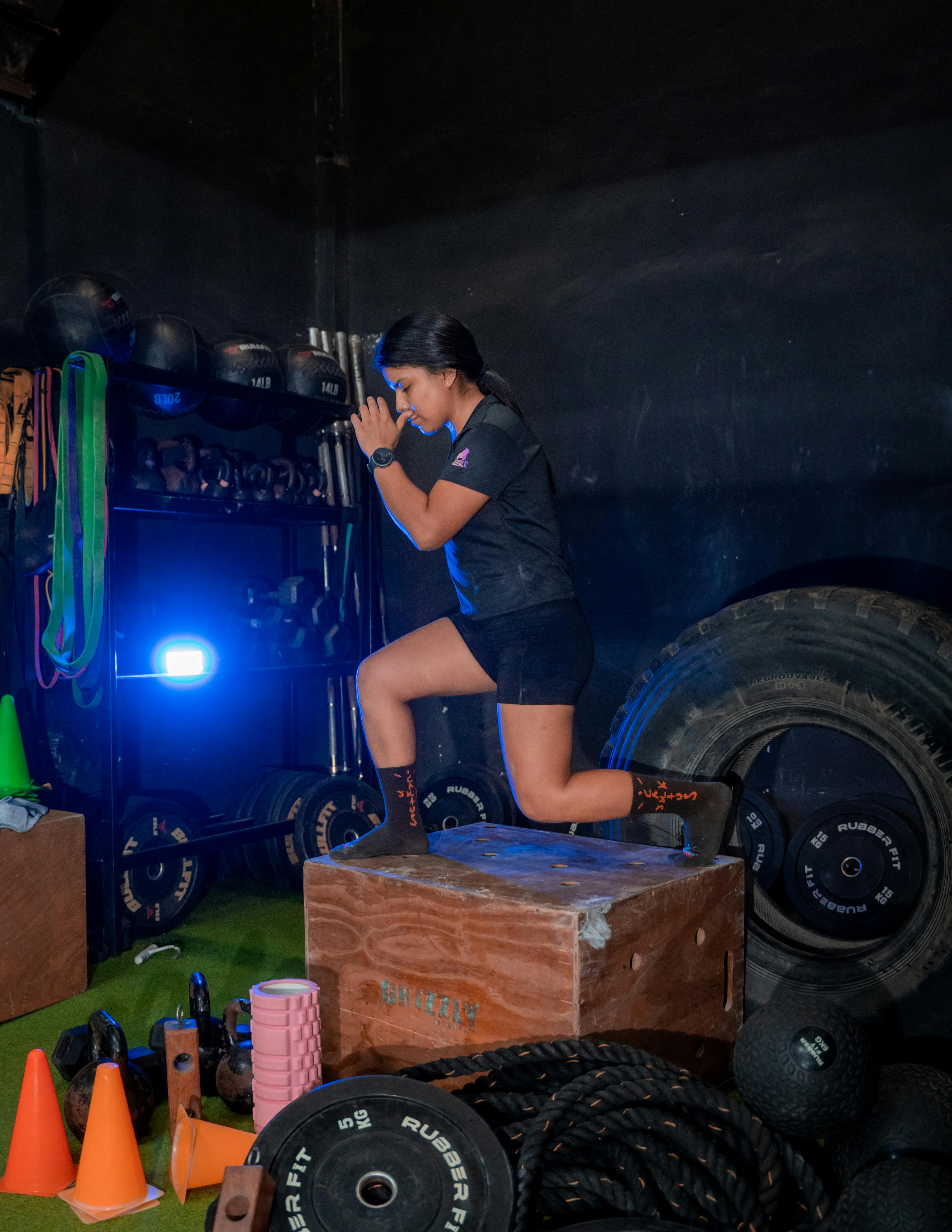I’ve poured my blood, sweat, and tears into collating a comprehensive video guide, the holy grail you might say: “How To Set Up Your Total Home Gym”. This isn’t some half-baked fluff piece, either! No siree, Bob! It’s a guide brimming with meticulously detailed, creative, and efficient ways to transform your humble abode into an ass-kicking, full-fledged gym. I’ve painstakingly emphasized crucial factors to keep in mind and explained, with the patience of a saint, might I add, how to set up each piece of gym equipment at home. Now you can’t escape answering that nagging question, “How To Set Up a Gym At Your House?” that’s been gnawing at your peace! So brace yourselves, because it’s about to get physically instructive in here.

Understanding Your Home Gym Needs
Setting up a gym in your own home can be a fantastic way to stay fit and healthy on your own terms. However, before you go out and purchase a bunch of equipment, it’s critical to understand your needs. Trust me, I’ve learned this the hard way.
Assessing Your Fitness Goals
Think about what you truly desire to achieve with a home gym. Are you aiming for weight loss, strength gain, increased flexibility, or better cardiovascular health? Your fitness goals will dictate what kind of equipment and setup you require.
Determining Your Space Availability
Space is a significant consideration when planning for a home gym. Are you converting a spare room, the garage, the attic, or are you just going to set up the equipment in your living room? The amount of space you have available will define the size and the number of equipment you can accommodate.
Understanding Your Budget Constraints
Buying gym equipment can quickly become expensive. Therefore, it’s crucial to understand what your budget allows. Trust me, nothing stings more than immersing yourself in the thought of having a decked-out home gym and then realizing you can’t afford half of it.
Choosing The Right Equipment
One of the biggest mistakes you can make (like I did) is buying equipment that you never use. To avoid that, focus on choosing the right equipment based on your fitness goals.
Cardio Equipment Selection
Depending on your fitness goals, invest in cardio equipment like treadmills, cross trainers, or stationary bikes. But don’t just buy a piece of cardio equipment because you think you should, buy it because you’ll use it!
Strength Training Equipment Choices
Strength training is an essential aspect of any workout regimen. Diverse pieces of equipment like dumbbells, barbells, kettlebells, a weight bench, or a power rack can help you target different muscle groups.
Flexibility and Balance Tools Selection
Don’t overlook the importance of flexibility and balance in your fitness journey. Items like stability balls, yoga mats, or Pilates reformers are not only beneficial but also take up considerably less space.
Other Essential Equipment
Additionally, you may want to invest in essential equipment like resistance bands, gloves, or foam rollers. These items can make your workout more effective and comfortable.

Equipment Installation Guide
Equally important as the equipment selection is the assembly and installation process. Speaking from experience, a gym that is difficult to navigate can severely disrupt your workout routine.
Floor Installation Preparation
Before setting up your home gym, assess your flooring. Setting up heavy gym equipment on inappropriate flooring can lead to damages. Rubber tiles or mats can provide a solid, safe foundation for your heavy equipment.
Assembling Cardio Equipment
Of all the gym equipment, cardio machines usually require the most assembly. Carefully follow the assembly instructions provided by the manufacturer – believe me, you don’t want to risk a malfunction due to incorrect assembly!
Setting Up Strength Training Tools
Strength training tools like benches and racks often require assembly but generally are simpler than cardio equipment. Just make sure it’s set up securely – no one wants a wobbly weight bench!
Arranging Flexibility and Balance Equipment
Usually, these tools require less or no assembly. However, keep in mind that they should be stored correctly and safely to ensure longevity and prevent accidents.
Optimal Gym Layout and Organization
Organizing and laying out your gym is not something to be taken lightly. An improperly arranged gym can lead to accidents and inefficiencies.
Comprehending Ergonomics of Gym Space
An understanding of the ergonomics of gym space is crucial. My advice? Keep enough space for you to move freely and comfortably when using all equipment.
Proper Positioning of Equipment
Position your equipment in a way that makes sense – keep cardio machines together, weights in one area, flexibility tools in another.
Creating Storage Solutions
Storage solutions can make your home gym look organized, functional, and appealing. Wall-mounted storage racks, equipment hooks, or even smart furniture can help you keep everything in its place.
Assuring Safety Zones Around Equipment
Ensure there are safety zones around each piece of equipment to prevent accidents. Keep in mind, safety should always be your first priority.

Creating the Right Ambiance
Creating an enviornment that motivates you to spend time in your home gym is crucial.
Choosing the Right Lighting
Lighting plays a critical role in creating an energizing workout environment. Opt for lights that are bright yet easy on the eyes.
Selecting Appropriate Colors for Walls
While you may think color choice is irrelevant, it can subconsciously impact your mood and energy levels. Bright, vibrant colors tend to be stimulating, while cooler tones may have a calming effect.
Ensuring Good Ventilation
Working out in a poorly-ventilated space can be unpleasant and potentially harmful. Consider installing fans or simply opening windows to ensure fresh airflow.
Adding Inspirational Elements
Adding motivational quotes, posters, or a mirror can make a huge difference. These elements can boost your spirits and provide just the push you need to continue with your workout.
Maintaining Your Home Gym
A home gym requires careful and regular maintenance to ensure safety, cleanliness, and longevity of the equipment.
Cleaning and Sanitizing Equipment
Cleaning and sanitizing your equipment can make your workout experience more pleasant and prevent the spread of bacteria and germs.
Regular Equipment Inspection
It’s fundamentally important to regularly inspect your equipment for any damages. You don’t want to spot a crack in your dumbbell while you’re in the middle of a rep!
Repairing and Replacing Broken Parts
Promptly repair or replace any damaged or broken parts to maintain gym safety and functionality.
Upgrading the Gym Over Time
As you advance in your fitness goals, consider upgrading your gym with more advanced equipment, or just to give the space a fresh feel.
Video Guide: Setting Up The Total Home Gym
Introduction to Setup Video
I can’t express how helpful videos can be when setting up your home gym. Start with a comprehensive introduction to the set-up process.
Step by Step Assembly Details
Step by step assembly videos guide can help you follow along and make the assembly process way easier and less frustrating.
Practical Demonstrations
Seeing someone use the gym equipment properly can help you understand how to use it correctly and safely.
Designing a Custom Workout Routine
Having a customized workout routine based on your fitness goals is vital for getting the results you want.
Assessing Fitness Level
Before setting up your workout routine, it’s important to assess your fitness level to establish a clear starting point.
Deciding on Workout Goals
Clearly defined workout goals can give you something to work towards and help you pick the right exercises.
Formulating a Balanced Workout Routine
A balanced workout routine that includes cardio, strength training, and flexibility exercises will help you achieve your fitness goals efficiently.
Tracking Your Workout Progress
This is crucial for staying motivated and knowing when to tweak your routine based on your progress.
Special Considerations
Accommodating Special Needs
For those with special needs or disabilities, it’s essential to choose and organize equipment that is safe and comfortable.
Setting Up Gyms for Kids or Seniors
Child- and senior-friendly home gyms require specific equipment and safety measures. Likewise, the layout should be considerate of the users’ abilities and limitations.
Adapting to Small Spaces
Creative use of space, multi-purpose equipment, and smart storage solutions can help you adapt to smaller spaces.
Assuring Safety Considerations
No matter what, always prioritize safety in your home gym. This includes a proper layout, secure equipment setup, and regular maintenance.
Frequently Asked Questions
What equipment is essential for a home gym?
The equipment you need depends on your fitness goals. Cardio equipment, weights, and flexibility tools are typically essential.
How much space is required for a home gym?
It largely depends on the kind of equipment you plan to incorporate. With smart space utilization, even a small room can serve as an efficient gym.
How much does a home gym cost?
The cost can vary significantly based on the type of equipment you choose, brand prices, and whether you go for new or second-hand equipment.
How to keep gym equipment in top shape?
Regular cleaning and maintenance, coupled with proper usage, can prolong the life of your gym equipment. Following the manufacturer’s guidelines can also ensure they stay in top shape.
In conclusion, setting up a gym at your house involves a thorough understanding of your fitness goals, budget, and space constraints. Choosing the right equipment, installing and maintaining it properly, and creating a motivating ambiance are also critical factors. With these guidelines, you can create an effective and efficient home gym that suits your needs. But remember, the main goal is to stay active and healthy.

